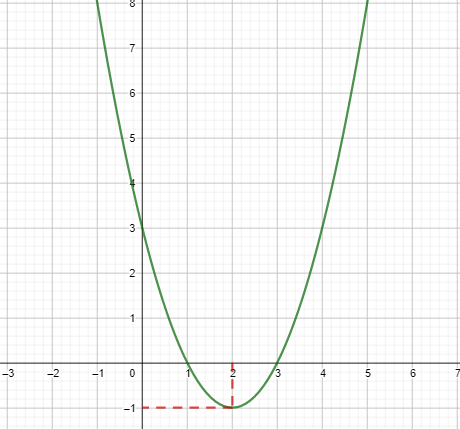
- f(x) → f(x + a) - a translation in the negative x-axis by a
- f(x) → f(x - a) - a translation in the positive x-axis by a
- f(x) → f(x) + a - a translation in the positive y-axis by a
- f(x) → f(x) - a - a translation in the negative y-axis by a
E.g.1
Sketch y = x2 + 2x - 3 and find the following:
- The line of symmetry
- The solutions when y = 0
- The coordinates of the minimum point
- The y-intercept
y = x2 + 2x - 3
By completing the square, y = (x + 1)2 - 4
1) Line of symmetry, x = -1
2) (x + 1)2 - 4 = 0 → x = -3 or x = 1
3) Turning point ~ (-1,-4)
4) y-intercept ~ (0,-3)
E.g.2
Sketch y = x2 -4x + 3 and find the following:
- The line of symmetry
- The solutions when y = 0
- The coordinates of the minimum point
- The y-intercept
y = x2 -4x + 3
By completing the square, y = (x - 2)2 - 1
1) Line of symmetry, x = 1
2) (x - 2)2 - 1 = 0 → x = 3 or x = 1
3) Turning point ~ (2,-1)
4) y-intercept ~ (0,3)
You can practise translation interactively with the following applet:







0 comments:
Post a Comment